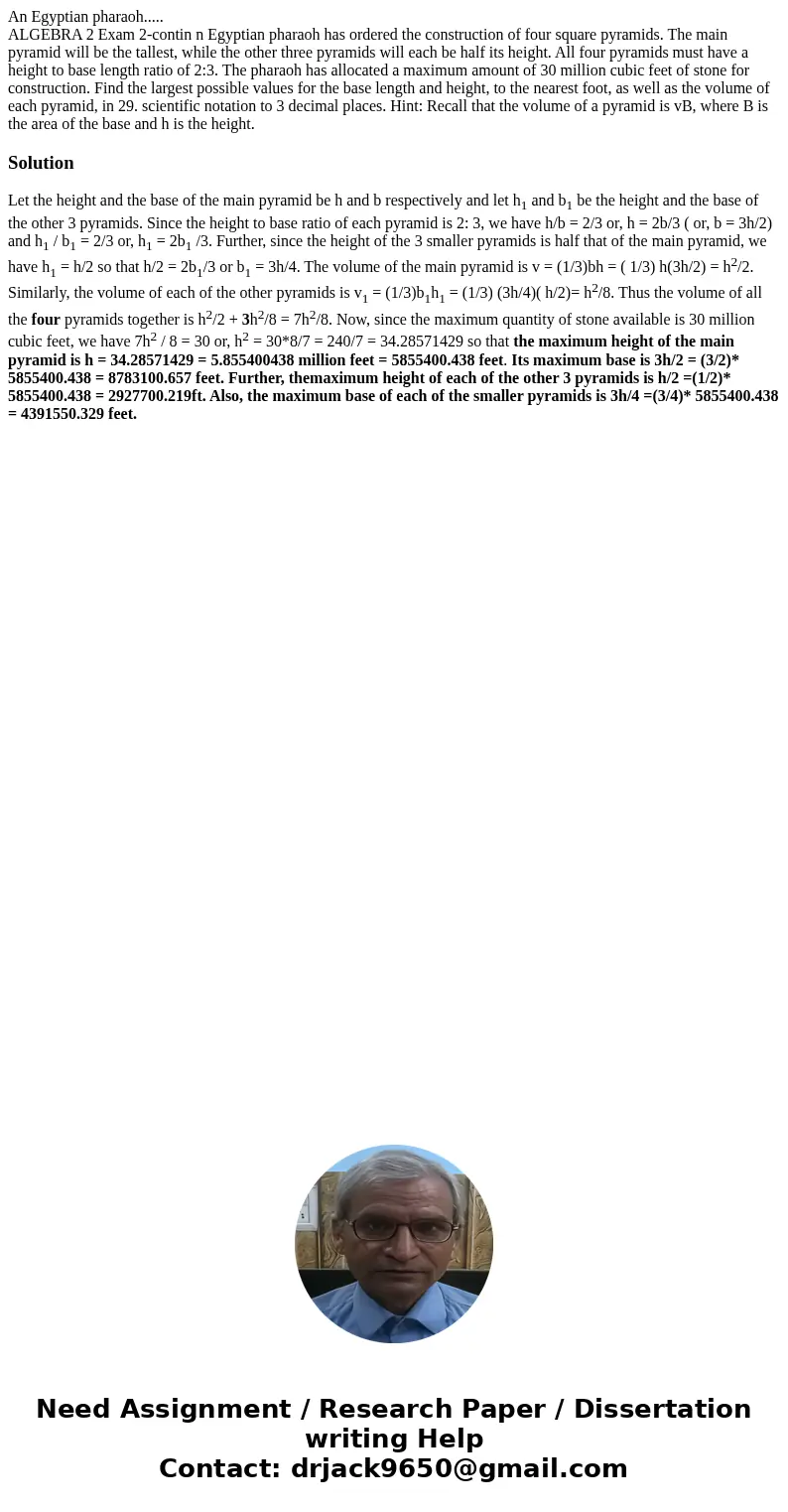An Egyptian pharaoh ALGEBRA 2 Exam 2contin n Egyptian pharao
Solution
Let the height and the base of the main pyramid be h and b respectively and let h1 and b1 be the height and the base of the other 3 pyramids. Since the height to base ratio of each pyramid is 2: 3, we have h/b = 2/3 or, h = 2b/3 ( or, b = 3h/2) and h1 / b1 = 2/3 or, h1 = 2b1 /3. Further, since the height of the 3 smaller pyramids is half that of the main pyramid, we have h1 = h/2 so that h/2 = 2b1/3 or b1 = 3h/4. The volume of the main pyramid is v = (1/3)bh = ( 1/3) h(3h/2) = h2/2. Similarly, the volume of each of the other pyramids is v1 = (1/3)b1h1 = (1/3) (3h/4)( h/2)= h2/8. Thus the volume of all the four pyramids together is h2/2 + 3h2/8 = 7h2/8. Now, since the maximum quantity of stone available is 30 million cubic feet, we have 7h2 / 8 = 30 or, h2 = 30*8/7 = 240/7 = 34.28571429 so that the maximum height of the main pyramid is h = 34.28571429 = 5.855400438 million feet = 5855400.438 feet. Its maximum base is 3h/2 = (3/2)* 5855400.438 = 8783100.657 feet. Further, themaximum height of each of the other 3 pyramids is h/2 =(1/2)* 5855400.438 = 2927700.219ft. Also, the maximum base of each of the smaller pyramids is 3h/4 =(3/4)* 5855400.438 = 4391550.329 feet.

 Homework Sourse
Homework Sourse